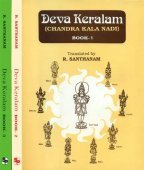Kutila, Kuṭila, Kuṭilā: 30 definitions
Introduction:
Kutila means something in Buddhism, Pali, Hinduism, Sanskrit, the history of ancient India, Marathi, Hindi, biology. If you want to know the exact meaning, history, etymology or English translation of this term then check out the descriptions on this page. Add your comment or reference to a book if you want to contribute to this summary article.
Alternative spellings of this word include Kutil.
In Hinduism
Shilpashastra (iconography)
Source: Wisdom Library: Śilpa-śāstraKuṭila (कुटिल) is a Sanskrit name referring to one of the eight manifestations of Krodha, who is a form of Bhairava. According to the Rudrayāmala, there are eight main forms of Bhairava who control the eight directions of this universe. Each form (e.g., Krodha) has a further eight sub-manifestations (e.g., Kuṭila), thus resulting in a total of 64 Bhairavas.
When depicting Kuṭila according to traditional iconographic rules (śilpaśāstra), one should depcit him (and other forms of Krodha) having a smoke color; he should carry khaḍga, kheṭaka, a long sword and paraśu. The word Śilpaśāstra refers to an ancient Hindu science of arts and crafts, dealing with subjects such as painting, sculpture and iconography.
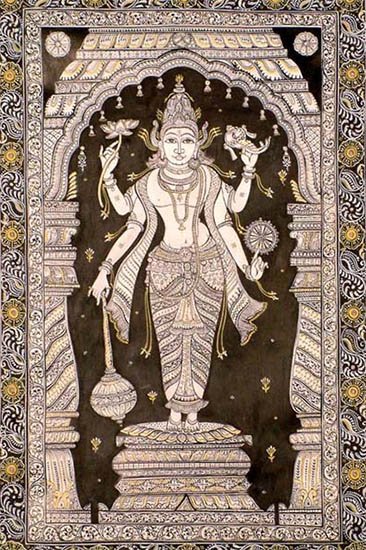
Shilpashastra (शिल्पशास्त्र, śilpaśāstra) represents the ancient Indian science (shastra) of creative arts (shilpa) such as sculpture, iconography and painting. Closely related to Vastushastra (architecture), they often share the same literature.
Shaivism (Shaiva philosophy)
Source: Wisdom Library: ŚaivismKuṭila (कुटिल) is the name of a nāga chief, presiding over Ābhāsa, according to the Parākhyatantra 5.44-45. Ābhāsa refers to one of the seven pātālas (‘subterranean paradise’). The word pātāla in this tantra refers to subterranean paradises for seekers of otherworldly pleasures and each the seven pātālas is occupied by a regent of the daityas, nāgas and rākṣasas.
The Parākhyatantra is an old Śaiva-siddhānta tantra dating from before the 10th century.
Source: Brill: Śaivism and the Tantric TraditionsKuṭilā (कुटिला) refers to “dishonest (mental attitude)”, according to the 13th-century Matsyendrasaṃhitā: a Kubjikā-Tripurā oriented Tantric Yoga text of the Ṣaḍanvayaśāmbhava tradition from South India.—Accordingly, “[Devī spoke]:—O God, what kind of a woman is a Yoginī? Who is Māyā and who is Pāśavī? Tell me, O Bhairava, the pros and cons of having sex with them. [Bhairava spoke]:—[...] [Pāśavī:] her mental attitude is dishonest (vikalpa-kuṭilā), she is wicked, hostile to Kaula Practice. She tends to abuse Śiva, O Goddess, and to obstruct his worship. This [type], the Pāśavī, has been [now] taught by me. O Suvratā, hear the one that is called Māyā”.
Source: SOAS University of London: Protective Rites in the Netra TantraKuṭila (कुटिल) refers to a “bent (face)”, according to the Netratantra of Kṣemarāja: a Śaiva text from the 9th century in which Śiva (Bhairava) teaches Pārvatī topics such as metaphysics, cosmology, and soteriology.—Accordingly, [verse 10.1-7ab, while describing the appearance and worship of Bhairava]—“Now, at this moment, I shall explain the distinct appearance of Bhairava, [who] resembles an ointment [that clears the eye]. He has a nature that burns up and dissolves all things. Five-faced, atop a corpse, ten-armed [and] terrible, he resembles troops with demon mouths. He rumbles, [producing] a terrible noise, speaks with a gaping mouth [adorned with] with large tusks, [his face] bent in a frown (bhrukuṭī-kuṭila-īkṣaṇa). [...] Having worshipped Bhairava, [the Mantrin] remembers being joined in union [with] him, [in the same way as] dissolution in fire”.
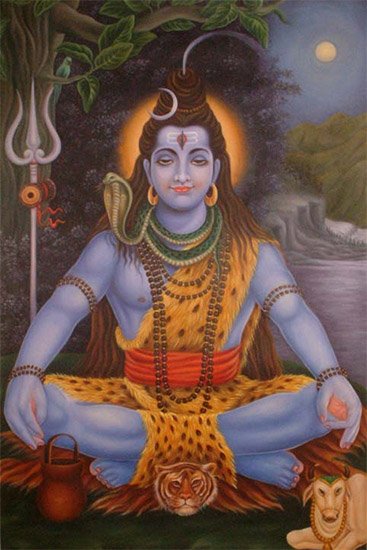
Shaiva (शैव, śaiva) or Shaivism (śaivism) represents a tradition of Hinduism worshiping Shiva as the supreme being. Closely related to Shaktism, Shaiva literature includes a range of scriptures, including Tantras, while the root of this tradition may be traced back to the ancient Vedas.
Chandas (prosody, study of Sanskrit metres)
Source: Shodhganga: a concise history of Sanskrit Chanda literatureKuṭila (कुटिल) is the alternative name of a Sanskrit metre (chandas) mentioned by Hemacandra (1088-1173 C.E.) in his auto-commentary on the second chapter of the Chandonuśāsana. Kuṭila corresponds to Ghacā, Haṃsaśyenī. Hemacandra gives these alternative names for the metres by other authorities (like Bharata), even though the number of gaṇas or letters do not differ.
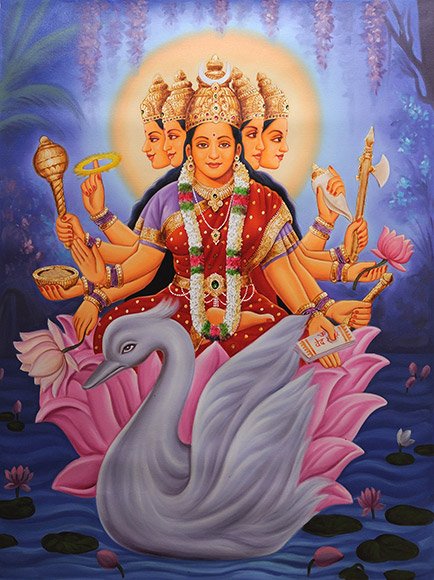
Chandas (छन्दस्) refers to Sanskrit prosody and represents one of the six Vedangas (auxiliary disciplines belonging to the study of the Vedas). The science of prosody (chandas-shastra) focusses on the study of the poetic meters such as the commonly known twenty-six metres mentioned by Pingalas.
Purana and Itihasa (epic history)
Source: archive.org: Puranic EncyclopediaKuṭilā (कुटिला).—See under Pārvatī.
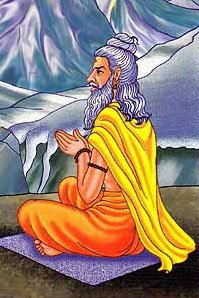
The Purana (पुराण, purāṇas) refers to Sanskrit literature preserving ancient India’s vast cultural history, including historical legends, religious ceremonies, various arts and sciences. The eighteen mahapuranas total over 400,000 shlokas (metrical couplets) and date to at least several centuries BCE.
Ayurveda (science of life)
Toxicology (Study and Treatment of poison)
Source: Shodhganga: Kasyapa Samhita—Text on Visha ChikitsaKuṭila (कुटिल) refers to one of the sixteen varieties of Maṇḍalī snakes, according to the Kāśyapa Saṃhitā: an ancient Sanskrit text from the Pāñcarātra tradition dealing with both Tantra and Viṣacikitsā—an important topic from Āyurveda which deals with the study of Toxicology (Viṣavidyā or Sarpavidyā).—Kāśyapa sources his antidotes from a multitude plants, a few minerals, salts and animal products available in nature. All these plants fall under various groups called gaṇas, as pronounced by the Ayurvedic Nigaṇṭus.
Symptoms of Kuṭila snake-bite: Pain round the area of bite.
Treatment of Kuṭila snake-bite: A paste made out of Red chalk or Ochre, (famed for its cooling properties) one measure of the powder of the bark of Śleṣmātaka and Śiriṣa must be used as lepa or ointment. An effusion of the roots of (Suparṇa or Sugandha) and Vega combined with ghee and milk must be given as a drink.
Unclassified Ayurveda definitions
Source: gurumukhi.ru: Ayurveda glossary of termsKuṭila (कुटिल):—[kuṭilaṃ] Asymmetrical, blended, Curled
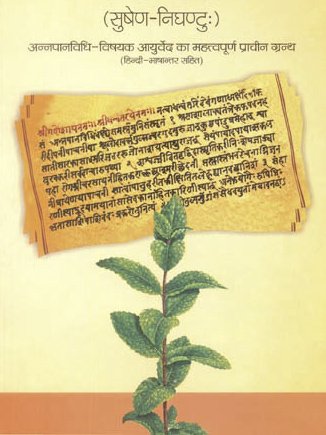
Āyurveda (आयुर्वेद, ayurveda) is a branch of Indian science dealing with medicine, herbalism, taxology, anatomy, surgery, alchemy and related topics. Traditional practice of Āyurveda in ancient India dates back to at least the first millenium BC. Literature is commonly written in Sanskrit using various poetic metres.
Shaktism (Shakta philosophy)
Source: Google Books: Manthanabhairavatantram1) Kuṭilā (कुटिला) refers to the “crooked” form of the energy of the vital breath.—Possibly because of its shape, Gandhamālya is called Mahānāsa—the Great Nose. As Kuṇḍalinī is, amongst other things, the energy of the vital breath that enters and exits from the nose, she is sometimes called nāsikāśakti—the ‘energy of the nose’. Possibly, then, the ‘Great Nose’ is this one above the head through which the energy of the vital breath travels in a straight ascending and descending movement. It is the nose of the upper face above the crown of the head. Moving through the channel of this nose, the energy of the vital breath is no longer ‘crooked’ (kuṭilā) as it is when it travels through the nose of the lower face in the fettered condition.
2) Kuṭilā (कुटिला) refers to “she of a crooked form” and is used to described the Goddess (i.e., Khageśī), according to the second recension of the Yogakhaṇḍa of the Manthānabhairavatantra, a vast sprawling work that belongs to a corpus of Tantric texts concerned with the worship of the goddess Kubjikā.—Accordingly, “In the meantime, once the goddess had crossed over the most excellent Yoga and once the fifth night had passed, she emerged from the middle of the Liṅga. [...] She (also has other forms with) two or six arms and, beautiful, sits on five ghosts. In the left hand (she holds) a skull and (in her other) upraised hands (she holds a) noose and spear. Crooked [i.e., kuṭilā], her body grey, she is Cāmuṇḍā, the accomplished Yoginī. This Vidyā, of many forms, is the woman who resides within the Triangle. Such is the visualized form of the goddess, the deity called Khageśī”.
Source: Brill: Śaivism and the Tantric Traditions (shaktism)Kuṭila (कुटिल) refers to “curly (locks)”, according to the King Vatsarāja’s Pūjāstuti called the Kāmasiddhistuti (also Vāmakeśvarīstuti), guiding one through the worship of the Goddess Nityā.—Accordingly, “[...] I honour Padmā, [beautiful and tender like] a lotus plant. Her eyes are lotus-like and she dwells in a bed of lotuses. Her four arms look splendid with two lotuses [in two hands] and the gestures of grace and safety [in two others]. May the virgin goddess Durgā annihilate my hardships, I pray. Her hands are marked by the conch and discus. She has curly locks (kuṭila-alakā) and rides [a lion,] the king of wild animals. [...]
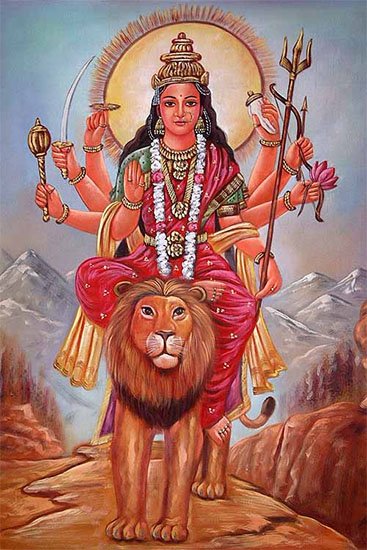
Shakta (शाक्त, śākta) or Shaktism (śāktism) represents a tradition of Hinduism where the Goddess (Devi) is revered and worshipped. Shakta literature includes a range of scriptures, including various Agamas and Tantras, although its roots may be traced back to the Vedas.
Kavya (poetry)
Source: Brill: Śaivism and the Tantric Traditions (kavya)Kuṭila (कुटिल) refers to a “becoming furrowed (into a frown)”, according to Bāṇa’s Kādambarī (p. 225-226).—Accordingly, while describing the shire of the Goddess Caṇḍikā, “[Then follows the image of the Goddess Caṇḍikā, which matches the conception of Kālarātri in the passage from the Mahābhārata:] [...] she bore the coquettish apparel of a woman going out to meet Mahākāla at night, with a vine-like body furnished with a raiment reddened with saffron-dye, with a face with red eyes, whose brows were furrowed into a frown (bhṛkuṭi-kuṭila-bhru), whose lip was crimsoned with betel that was blood, whose cheeks were reddened by the light shed from ear-ornaments of pomegranate flowers, with a forehead on which there was a tilaka dot of vermillion made by a Śabara beauty, covered by a magnificent gold turban. She was worshipped by goats... mice... antelope and black serpents... She was praised on all sides by flocks of old crows; [...]”.
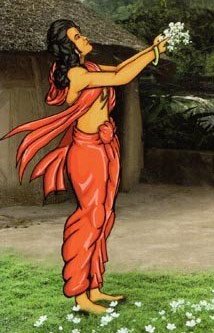
Kavya (काव्य, kavya) refers to Sanskrit poetry, a popular ancient Indian tradition of literature. There have been many Sanskrit poets over the ages, hailing from ancient India and beyond. This topic includes mahakavya, or ‘epic poetry’ and natya, or ‘dramatic poetry’.
In Buddhism
Mahayana (major branch of Buddhism)
Source: academia.edu: A Study and Translation of the GaganagañjaparipṛcchāKuṭila (कुटिल) refers to “crooked (thinking)” (as opposed to Akuṭila—‘not crooked’), according to the Gaganagañjaparipṛcchā: the eighth chapter of the Mahāsaṃnipāta (a collection of Mahāyāna Buddhist Sūtras).—Accordingly: “The Bodhisattva established on the pure path produces the great light of the dharma for the sake of living beings who are on the wrong path. Then those living beings, having attained the light, are also established in the true supramundane path. [...] (10) this path is without darkness since it is completely pure radiance by insight; (11) this path is righteous since it is without deception or guile; (12) this path is luminous since there is no crooked thinking (akuṭila-citta); [...]
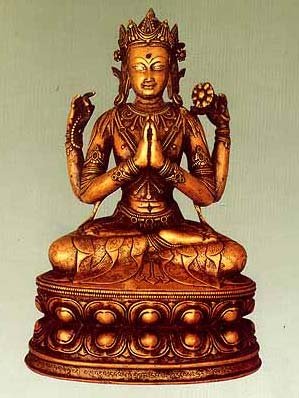
Mahayana (महायान, mahāyāna) is a major branch of Buddhism focusing on the path of a Bodhisattva (spiritual aspirants/ enlightened beings). Extant literature is vast and primarely composed in the Sanskrit language. There are many sūtras of which some of the earliest are the various Prajñāpāramitā sūtras.
India history and geography
Source: Cologne Digital Sanskrit Dictionaries: Indian Epigraphical GlossaryKuṭila.—cf. Siddhamātṛkā. Note: kuṭila is defined in the “Indian epigraphical glossary” as it can be found on ancient inscriptions commonly written in Sanskrit, Prakrit or Dravidian languages.

The history of India traces the identification of countries, villages, towns and other regions of India, as well as mythology, zoology, royal dynasties, rulers, tribes, local festivities and traditions and regional languages. Ancient India enjoyed religious freedom and encourages the path of Dharma, a concept common to Buddhism, Hinduism, and Jainism.
Biology (plants and animals)
Source: Google Books: CRC World Dictionary (Regional names)Kutila in India is the name of a plant defined with Argemone mexicana in various botanical sources. This page contains potential references in Ayurveda, modern medicine, and other folk traditions or local practices It has the synonym Echtrus mexicanus (L.) Nieuwl. (among others).
Example references for further research on medicinal uses or toxicity (see latin names for full list):
· Hortus Britannicus (1830)
· Bot. Žurn. (1991)
· J. Palynol. (1980)
· Cytologia (1988)
· Mem. Torrey Bot. Club (1958)
· Revisio Generum Plantarum (1891)
If you are looking for specific details regarding Kutila, for example chemical composition, pregnancy safety, health benefits, diet and recipes, side effects, extract dosage, have a look at these references.

This sections includes definitions from the five kingdoms of living things: Animals, Plants, Fungi, Protists and Monera. It will include both the official binomial nomenclature (scientific names usually in Latin) as well as regional spellings and variants.
Languages of India and abroad
Pali-English dictionary
Source: BuddhaSasana: Concise Pali-English Dictionarykuṭila : (adj.) bent; crooked.
Source: Sutta: The Pali Text Society's Pali-English DictionaryKuṭila, (adj.) bent, crooked (cp. kuj and kuc, Morris J. P. T. S. 1893, 15) J. III, 112 (=jimha); Miln. 297 (°saṅkuṭila), 418 (of an arrow); nt. a bend, a crook Miln. 351. —a° straight Vv 167 (-magga). [?] —a° uprightness Bdhd 20. (Page 219)
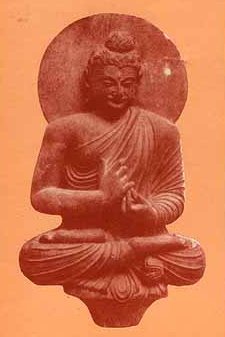
Pali is the language of the Tipiṭaka, which is the sacred canon of Theravāda Buddhism and contains much of the Buddha’s speech. Closeley related to Sanskrit, both languages are used interchangeably between religions.
Marathi-English dictionary
Source: DDSA: The Molesworth Marathi and English Dictionarykuṭila (कुटिल).—a (S) Crooked or bent. 2 fig. Perverse; as kuṭilabuddhi, kuṭilāśaya, kuṭila-tarka-dṛṣṭi-bhāṣaṇa-bhāṣī- mati-vākya-vṛtti-svabhāva. 3 Vile and hateful gen.: malicious and mischievous.
--- OR ---
kuṭīḷa (कुटीळ).—a (kuṭila S) Perverse, malicious, vile, mischievous, hateful.
Source: DDSA: The Aryabhusan school dictionary, Marathi-Englishkuṭila (कुटिल) [-kuṭīḷa, -कुटीळ].—a Crooked. Perverse. Vile and hateful.
Marathi is an Indo-European language having over 70 million native speakers people in (predominantly) Maharashtra India. Marathi, like many other Indo-Aryan languages, evolved from early forms of Prakrit, which itself is a subset of Sanskrit, one of the most ancient languages of the world.
Sanskrit dictionary
Source: DDSA: The practical Sanskrit-English dictionaryKuṭila (कुटिल).—a. [kuṭ-ilac]
1) Crooked, Pañcatantra (Bombay) 1.65; bent, curved, curled; भेदाद् भ्रुवोः कुटिलयोः (bhedād bhruvoḥ kuṭilayoḥ) Ś.5.23; R.6.82; 19.17;
2) Tortuous, winding; क्रोशं कुटिला नदी (krośaṃ kuṭilā nadī) Sk.
3) (fig.) Insincere, fraudulent, dishonest; अ° (a°) Pañcatantra (Bombay) 1.126.
-lā 1 Name of Sarasvatī.
2) A kind of perfume.
-lam 1 Name of a plant (Mar. tagara).
2) Tin.
Source: Cologne Digital Sanskrit Dictionaries: Edgerton Buddhist Hybrid Sanskrit DictionaryKuṭilā (कुटिला).—name of a kiṃnara maid: Kāraṇḍavvūha 6.4.
Source: Cologne Digital Sanskrit Dictionaries: Shabda-Sagara Sanskrit-English DictionaryKuṭila (कुटिल).—mfn.
(-laḥ-lā-laṃ) 1. Crooked, bent. 2. Dishonest, fraudulent. n.
(-laṃ) Tin. f.
(-lā) The name of a river, the Kutila river, according to some, a name of the Saraswati. E. kuṭ to be crooked, kilac Unadi aff.
Source: Cologne Digital Sanskrit Dictionaries: Benfey Sanskrit-English DictionaryKuṭila (कुटिल).—[kuṭ + ila], I. adj., f. lā, 1. Crooked, [Rāmāyaṇa] 1, 44, 25. 2. Crisped, [Bhāgavata-Purāṇa, (ed. Burnouf.)] 3, 33, 14. 3. Frowning, [Rāmāyaṇa] 5, 89, 2. 4. Deceitful, [Pañcatantra] i. [distich] 73; cf. a-kuṭila, adj. Candid, [Pañcatantra] i. [distich] 142. Ii. f. lā, The name of a river, [Rāmāyaṇa] 2, 73, 13, Gorr. (cf. kuṭika); 4, 40, 20.
Source: Cologne Digital Sanskrit Dictionaries: Cappeller Sanskrit-English DictionaryKuṭila (कुटिल).—[adjective] crooked, curled; false, deceitful. Abstr. tā [feminine], tva [neuter]
Source: Cologne Digital Sanskrit Dictionaries: Monier-Williams Sanskrit-English Dictionary1) Kuṭila (कुटिल):—[from kuṭ] a mf(ā)n. bent, crooked, curved, round, running in curved lines, crisped, curled, [Kātyāyana-śrauta-sūtra; Mahābhārata] etc.
2) [v.s. ...] dishonest, fraudulent, [Pañcatantra; Vetāla-pañcaviṃśatikā] etc.
3) [v.s. ...] m. a he-goat with particular marks, [Varāha-mihira’s Bṛhat-saṃhitā]
4) Kuṭilā (कुटिला):—[from kuṭila > kuṭ] f. ([scilicet] gati) a particular period in the retrograde course of a planet, [Sūryasiddhānta]
5) [v.s. ...] Name of a magic power
6) Kuṭila (कुटिल):—[from kuṭ] of a river ([varia lectio] for kuṭikā), [Rāmāyaṇa]
7) [v.s. ...] of the river Sarasvatī, [cf. Lexicographers, esp. such as amarasiṃha, halāyudha, hemacandra, etc.]
8) [v.s. ...] fn. Name of a metre (containing four lines of fourteen syllables each)
9) [v.s. ...] n. Name of a plant (= tagara, kuñcita, vakra), [cf. Lexicographers, esp. such as amarasiṃha, halāyudha, hemacandra, etc.]
10) [v.s. ...] a kind of perfume, [cf. Lexicographers, esp. such as amarasiṃha, halāyudha, hemacandra, etc.]
11) [v.s. ...] tin, [Horace H. Wilson]
12) b See [column]2.
Source: Cologne Digital Sanskrit Dictionaries: Yates Sanskrit-English DictionaryKuṭila (कुटिल):—[(laḥ-lā-laṃ) a.] Crooked; dishonest, fraudulent. (lā) f. The Kutila river. (laṃ) n. Tin.
Source: DDSA: Paia-sadda-mahannavo; a comprehensive Prakrit Hindi dictionary (S)Kuṭila (कुटिल) in the Sanskrit language is related to the Prakrit word: Kuḍila.
[Sanskrit to German]
Sanskrit, also spelled संस्कृतम् (saṃskṛtam), is an ancient language of India commonly seen as the grandmother of the Indo-European language family (even English!). Closely allied with Prakrit and Pali, Sanskrit is more exhaustive in both grammar and terms and has the most extensive collection of literature in the world, greatly surpassing its sister-languages Greek and Latin.
Hindi dictionary
Source: DDSA: A practical Hindi-English dictionaryKuṭila (कुटिल) [Also spelled kutil]:—(a) crooked; curved, tortuous; perverse; ~[tā] crookedness; curvature; perversity; tortuosity.
...
Kannada-English dictionary
Source: Alar: Kannada-English corpusKuṭila (ಕುಟಿಲ):—
1) [adjective] not straight; crooked; curved; bent.
2) [adjective] curling or tending to curl; having curls; curly.
3) [adjective] not honest; cheating; lying.
--- OR ---
Kuṭila (ಕುಟಿಲ):—
1) [noun] the quality of being dishonest; dishonest behaviour; deceiving, stealing, etc.
2) [noun] a dishonest, insincere man.
--- OR ---
Kuṭiḷa (ಕುಟಿಳ):—[adjective] = ಕುಟಿಲ [kutila]1.
--- OR ---
Kuṭiḷa (ಕುಟಿಳ):—[noun] = ಕುಟಿಲ [kutila]2.
Kannada is a Dravidian language (as opposed to the Indo-European language family) mainly spoken in the southwestern region of India.
See also (Relevant definitions)
Starts with (+29): Kutilabhava, Kutilabuddhi, Kutilacara, Kutilacci, Kutilacitta, Kutiladeha, Kutilaga, Kutilagami, Kutilagamin, Kutilagamitva, Kutilagara, Kutilagarbha, Kutilagarike, Kutilagarti, Kutilagati, Kutilagesha, Kutilai, Kutilaka, Kutilakantakam, Kutilakara.
Ends with: Akutila, Antahkutila, Bhrukutikutila, Kankutila, Nishkutila, Parikutila, Sakutila, Sankutila, Vakkutila, Vikalpakutila.
Full-text (+84): Kutilata, Antahkutila, Kutilangi, Kutilagamin, Kautilya, Kutilasvabhava, Kutilapakshman, Kutika, Kutilamati, Kutilashaya, Kutilaka, Jangha, Kutilam, Kutilagamitva, Kutilamanas, Parakutilam, Kutilagesha, Kutil, Kutilapushpika, Kutilaga.
Relevant text
Search found 26 books and stories containing Kutila, Kuṭila, Kuṭīḷa, Kuṭīla, Kuṭilā, Kuṭiḷa; (plurals include: Kutilas, Kuṭilas, Kuṭīḷas, Kuṭīlas, Kuṭilās, Kuṭiḷas). You can also click to the full overview containing English textual excerpts. Below are direct links for the most relevant articles:
Satirical works of Kshemendra (study) (by Arpana Devi)
5.11. The Tradesman (vaṇik) < [Chapter 5 - Kṣemendra’s objectives of Satire]
5.16. The Bawd (kuṭṭanī) < [Chapter 5 - Kṣemendra’s objectives of Satire]
5.1. The Corrupt Bureaucrats < [Chapter 5 - Kṣemendra’s objectives of Satire]
Sahitya-kaumudi by Baladeva Vidyabhushana (by Gaurapada Dāsa)
Padarthadharmasamgraha and Nyayakandali (by Ganganatha Jha)
Text 141-142 < [Chapter 6a - On Actions]
Vakyapadiya of Bhartrihari (by K. A. Subramania Iyer)
Verse 3.14.40 < [Book 3 - Pada-kāṇḍa (14): Vṛtti-samuddeśa (On Ccomplex Formation)]
The Agni Purana (by N. Gangadharan)
Chapter 367 - The class of words dependent on the substantives for their genders
Chapter 325 - The benefits of wearing the rosary beads
Chapter 288 - The management of the horses (aśvavāhana-sāra)
Bhakti-rasamrta-sindhu (by Śrīla Rūpa Gosvāmī)
Verse 4.1.29 < [Part 1 - Laughing Ecstasy (hāsya-rasa)]
Verse 2.1.211 < [Part 1 - Ecstatic Excitants (vibhāva)]
Related products
